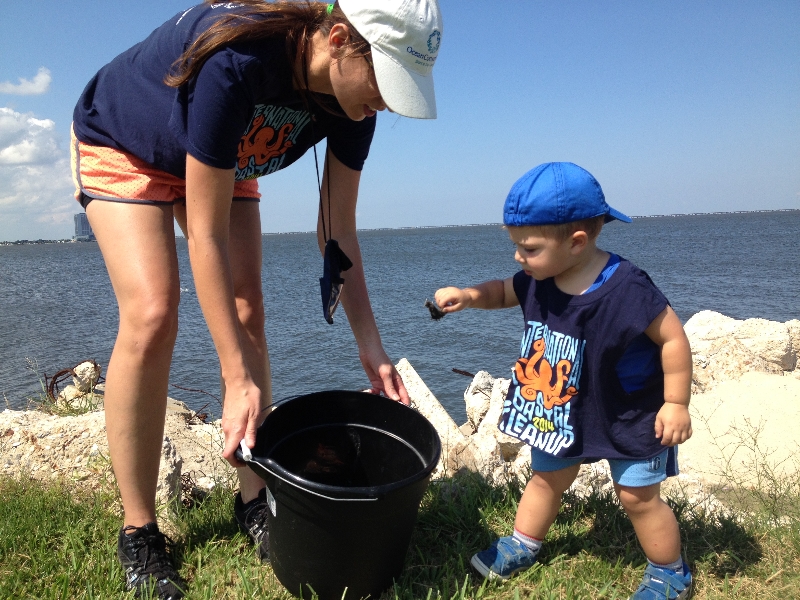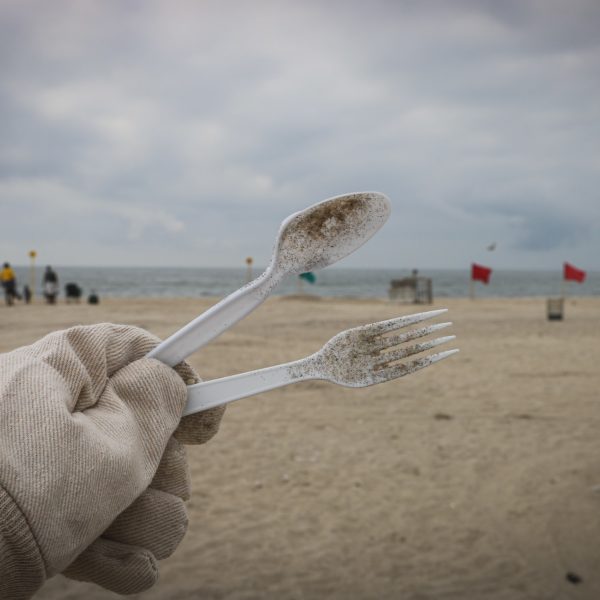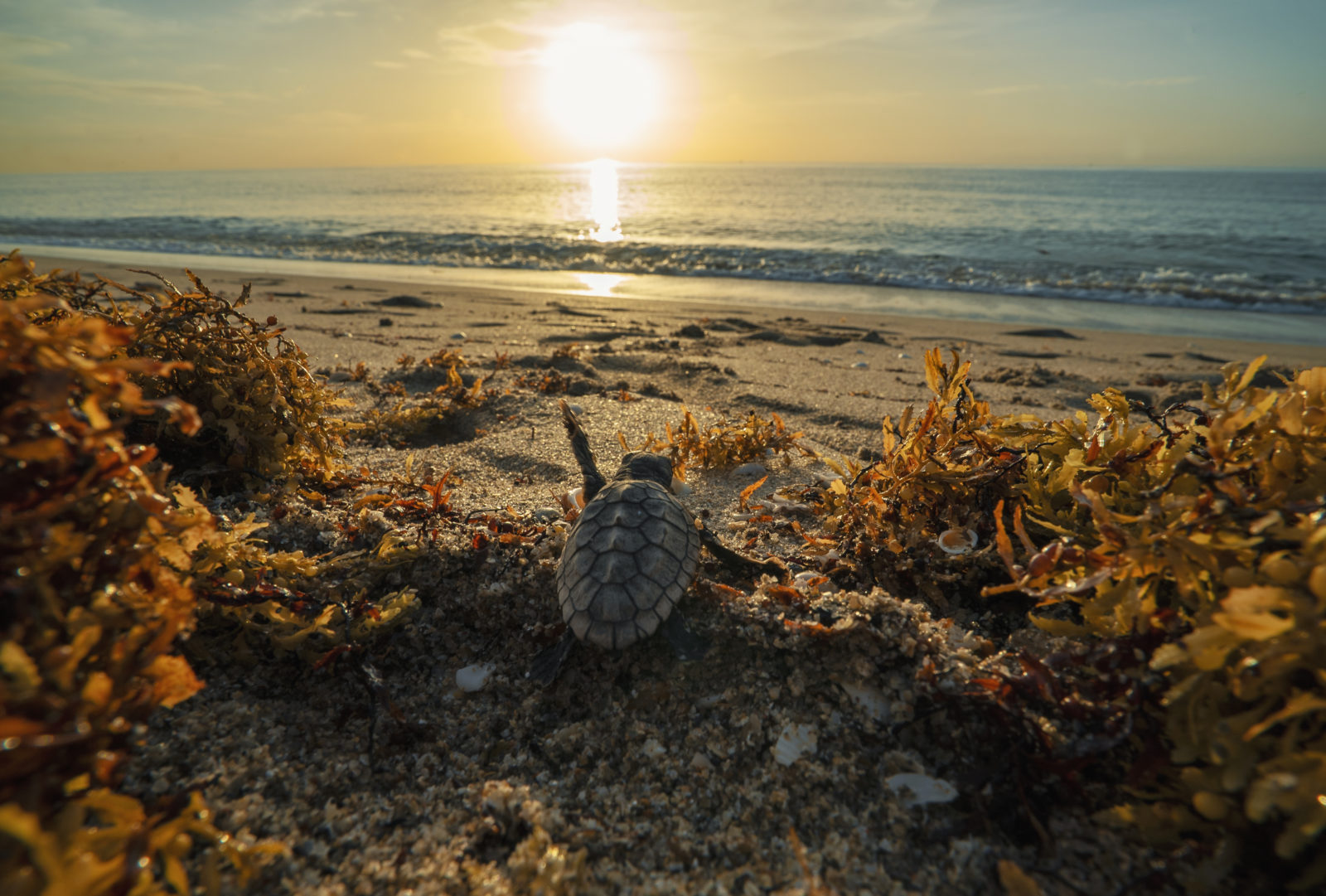Why Quitting Plastic Cutlery Helps Save our Ocean
Published by Ocean Conservancy
When it comes to ocean plastics, there are a number of images we paint within our minds. From plastic bottles and straws to food wrappers and single-use grocery bags, most of us are well aware that an ever-growing flood of garbage is entering our ocean on a daily basis.
The statistics that flow with this current of pollution seem to grow more astounding by the minute: it’s now estimated a whopping 8 million metric tons of plastic enters our blue planet’s marine waters annually. To put that in perspective, this volume of trash in just one year is approximately equivalent to an entire garbage truck full of plastic being dumped into our ocean every minute of every day … on all 365 of those days.
Yes, it’s that bad. But we haven’t lost hope yet.
With the growth of this tide of ocean trash, something else has grown as well: an awareness of the problem and a determined fire in the bellies of ocean advocates who are ready to fight back for the sake of our ocean. While there are many things we can do to combat plastic pollution, one of the most critical aspects of finding and executing solutions to the marine debris crisis is simple: we must better understand the factors that are instigating the problem in order to solve them. It’s simple, really: the more we know about specifically what trash is contaminating our waters, the better we can stop it from getting there in the first place.


For nearly 35 years, Ocean Conservancy’s International Coastal Cleanup (ICC) has rallied communities together to fight for one common cause: cleaning local coastlines and documenting the pollution that’s picked up. We use the data collected each year by the million-plus volunteers to not only report back to the public on just how much trash was removed, but also to do something arguably more important: spotlight exactly what was found. Last year, we found a lot of trash (23,333,816 pounds, to be exact). What was even more eyebrow-raising than the sheer volume of debris, however, was what constituted one of the most heavily-documented items in 2018.
For the first time since Ocean Conservancy began counting plastic cutlery, these utensils claimed a spot among the top ten most-collected pieces of trash at the 2018 cleanup. In just one day, volunteers removed close to 2 million single-use plastic forks, knives and spoons from waterways around the globe.
Stay up to date on ocean news!
Sign up for our emails
As with other environmental efforts combatting single-use plastics, such as our signature Skip the Straw campaign, a common theme seems to run through the heart of the movement to combat ocean plastic: the unquestionable, obvious truth that a portion of the problem, at its core, could be completely avoided with the switch to more sustainable alternatives. Most of us have the full capacity to skip plastic straws and invest in a reusable one. We have the ability to say no to single-use water bottles and treat ourselves to a reusable one. And there is nothing stopping us, at the end of the day, from quitting single-use plastic cutlery to help support a healthy ocean.


In a recent Forbes article, Nick Mallos, senior director of our Trash Free Seas program, explained the impact plastics like cutlery have on marine wildlife. “We have to remember that ocean animals and their feeding habits are not designed to distinguish plastic from food,” he said. “That’s why we see so many animals wash up with plastic in their guts, whether it’s straws, plastic bags or even more unusual items like plastic hoses.”
I don’t know about you, but with 2 million pieces of unnecessary plastic utensils added to that mix, my heart simply sinks. When it comes to quitting the cutlery, there’s one question that keeps repeating over and over again in my mind:
Do sea turtles need plastic sporks?
No, silly. They don’t. So why are we letting sporks enter their home in the first place?
Saying yes to more sustainable practices goes far beyond cutting down on personal waste. By bringing along reusable cutlery or asking your favorite takeout restaurant to look into greener, more eco-friendly business practices, little adjustments can make a world of a difference for the survival of marine animals like sea turtles.
Friends, it’s time to start standing up for wildlife and saying no to the very items we use on a regular basis that put them in harm’s way. It’s time to quit the cutlery.
Take the pledge today: quit the cutlery, and join the movement for a cleaner, healthier, more sustainable planet … both for our own sake, and the sake of all the animals who depend on us to make this change. If we can do it with straws, we can do it with other plastics, too.


The post Why Quitting Plastic Cutlery Helps Save our Ocean appeared first on Ocean Conservancy.
Read the full article at: https://oceanconservancy.org/blog/2019/10/30/quitting-plastic-cutlery-helps-save-ocean/


